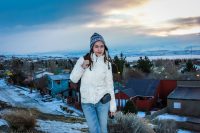Choosing the best camera for wildlife photography can be an overwhelming experience. After all, the camera body is just one aspect of the process – after that, you need to think about frame sizes, lenses, autofocus capabilities, burst settings, bags, tripods, memory cards…the list goes on. However, the process needn’t be so challenging; with a little bit of the right advice, choosing a camera that suits your needs should be a breeze. The key is to identify the kind of images you want to capture. From here, you can figure out what you’re looking for in a camera and what your expectations are. Here, we quickly run through the essential functions to focus on when selecting the best camera for wildlife photography, plus our top three picks.
What to look for in a camera for wildlife photography
Perhaps the most important concern when purchasing a camera for wildlife photography is the lens. To get the best close-up views of animals in the wild, you’ll need to invest in a telephoto lens. As a knock-on effect, you’ll need to carefully consider which sensor size you go for. Although full-frame sensors are often better than APS-C models, the magnification factor of smaller sensors can extend the reach of a telephoto lens. To maximize the reach of your lens, look for a camera that uses a Micro Four Thirds sensor. These sensors offer the greatest magnification, extending the reach of a lens 2x. This also allows companies to manufacture lighter, more compact telephoto lens due to the enhanced zoom capacity.
Furthermore, for capturing wildlife in action, you’ll want to make sure your chosen camera has speedy and accurate autofocus. Although precise numerical values aren’t assigned to autofocus performance, as a rule, you’ll get what you pay for. However, things to take into account include processor capacity and focus-tracking capabilities, which will improve your chances of capturing a sharp image every time. Your lens will have a big impact on autofocus performance too. For example, professional super-telephoto lenses have faster motors with better success rates.
Finally, for the best possible image quality it’s also preferable to use a lower ISO. Therefore, if you want to shoot wildlife in low-light conditions opt for a camera with a broad ISO range. Although higher ISOs create more noise, it’s better to compromise than not get the picture at all. Furthermore, considering that sophisticated autofocus systems have a minimum aperture requirement, having more room for maneuver when it comes to ISO is extremely useful.
The best camera for wildlife photography: Our picks

Considering the points explained above, we’ve compiled a list of three of our favorite cameras for wildlife photography. We’ve tried to select a camera to suit each budget, from the best value model to top-of-the-line gear.
1. Best value: Sony a9
Sony’s full-frame mirrorless a9 model features a sizeable 24.2-megapixel stacked CMOS sensor with a 693-point focal plane phase detection autofocus system. This means the camera can make 60 AF/AE tracking calculations per second, shooting at 20 frames per second continuously in 241 RAW in a single burst. Coming in at $999, it packs a lot of punch for a reasonably affordable camera.
2. Best Micro Four Thirds: Olympus OM-D E-M1 Mark II
We’ve already explained the advantages of a Micro Four Thirds sensor, so here’s our pick of the M4/3 pack. The Olympus OM-D E-M1 Mark II is the top model in the Olympus OM-D line, capable of capturing 18 fps with continuous AF tracking. Furthermore, the camera’s innovative Pro Capture mode allows users to record precise movement by taking 35 extra frames after you press the shutter. What’s more, at $1,599, it’s not the world’s most expensive camera.
3. The king of cameras: Canon EOS-1D X Mark II
Canon’s top professional model is arguably the best camera for wildlife photography. As the fastest DSLR available, the camera boasts a 14 fps capture rate when used with the optical viewfinder. Furthermore, the autofocus system is equally impressive, with 61 AF points and compatibility with apertures as low as f/8. However, a Canon 1D is a serious investment, with a $5,999 price tag – which makes it a model for pros or real photography buffs.
No comments yet
There are no comments on this post yet.






Leave a comment